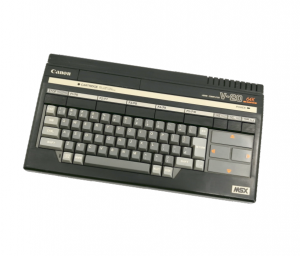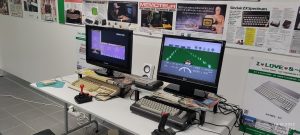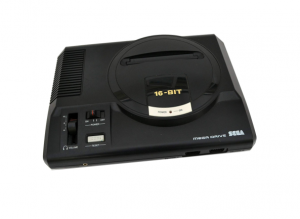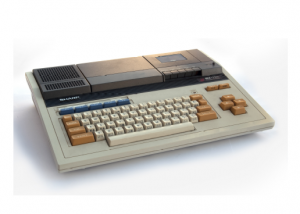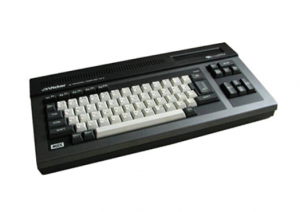Founded in 1930, Texas Instruments built its reputation producing semiconductors, integrated circuits, and scientific calculators. By the late 1970s, seeing the success of companies like Commodore and Apple, TI decided to leverage its technological know-how to create a home computer targeted at consumers and educational institutions.
In 1979, the company launched its first home computer, the TI-99/4. It was a unique machine in several respects: it featured a 16-bit TMS9900 CPU, making it one of the first 16-bit home computers in a world dominated by 8-bit processors like the MOS 6502 and Zilog Z80. The system also supported color graphics and sound, and its BASIC interpreter was built into ROM. Unfortunately, the original TI-99/4 suffered from a poor-quality keyboard and high price point, which limited its early adoption.
Recognizing these shortcomings, TI released the improved TI-99/4A in June 1981. This model addressed many criticisms by including a full-travel keyboard and expanded color capabilities, among other improvements. At its peak, the TI-99/4A became relatively popular, particularly in the United States. By mid-1983, Texas Instruments had sold approximately 2.8 million units of the TI-99/4A, making it one of the best-selling home computers of its time—though significantly trailing behind its biggest rival, the Commodore 64.
TI’s aggressive marketing strategies, including sharp price cuts and high-profile advertising campaigns, briefly allowed the TI-99/4A to dominate U.S. sales charts during parts of 1982 and 1983. At one point, TI was selling the machine at below production cost, hoping to make profits through software and peripheral sales. This strategy backfired when third-party developers hesitated to produce software for the proprietary system, which limited software variety and hindered long-term consumer interest.
Uses of the TI-99/4A
The TI-99/4A found its place primarily in home education, programming practice, and gaming. It was marketed as a family computer, useful for children learning to program in TI BASIC and for playing educational or arcade-style games. TI produced many educational cartridges and learning tools, emphasizing its value as an educational investment for families.
In addition to gaming and education, some hobbyists used the TI-99/4A for light word processing, spreadsheet work, and even telecommunications via modem. Expansion capabilities allowed for peripherals like speech synthesizers, memory expansion boxes, and disk drives, though these add-ons were relatively expensive and less commonly used.
The press reception to the TI-99 series was mixed. Early reviews praised its innovative 16-bit CPU, color graphics, and expandability. However, many publications criticized TI’s restrictive architecture. Texas Instruments chose to design the TI-99/4A with a proprietary expansion bus and cartridge system, limiting the role of third-party developers.
Computer magazines of the early 1980s, such as Compute!, Byte, and Creative Computing, frequently compared the TI-99/4A to its contemporaries, often noting its hardware strengths but lamenting the lack of available software and the inefficient use of its powerful CPU due to bottlenecks in its memory architecture.
By 1983, as Commodore initiated a price war that saw the price of the Commodore 64 fall rapidly, the media began predicting trouble for TI’s home computer division. The company’s reliance on price cutting to compete led to massive financial losses. In late 1983, after reporting losses of nearly half a billion dollars, Texas Instruments decided to exit the home computer market altogether.
The TI-99/4A had a reasonably active software scene during its short commercial life, especially in games, educational software, and basic productivity tools, though it never reached the software diversity seen on platforms like the Commodore 64 or Apple II.
Texas Instruments released a number of official game cartridges, many of which were adaptations of popular arcade hits or original titles designed in-house. Key examples include:
- Parsec – One of the most famous TI-99/4A exclusives, Parsec was a horizontally scrolling space shooter showcasing the machine’s color graphics and sound abilities. It was bundled with many systems later in its life.
- TI Invaders – TI’s own take on Space Invaders, this shooter became a staple game for TI-99/4A owners.
- Munch Man – An officially licensed but creatively altered version of Pac-Man. Instead of eating pellets, Munch Man filled the maze with chains.
- Hunt the Wumpus – A text-based adventure game, one of the earliest examples of its genre, originally developed at TI and later distributed as a cartridge.
- Alpiner – A mountain climbing arcade game that used the speech synthesizer peripheral to announce obstacles and player status, adding a unique layer of immersion.
Third-party game support was limited compared to platforms like the Commodore 64, largely due to TI’s restrictive cartridge licensing policies. Still, some independent developers produced games on cassette or disk formats, and the Extended BASIC programming language allowed hobbyists to create their own simple games.
Though less commonly used for serious productivity, the TI-99/4A did have basic tools available:
- TI Writer – A word processing cartridge that could, when paired with the memory expansion and disk drive, turn the TI-99/4A into a functional writing tool.
- Microsoft Multiplan – TI licensed this spreadsheet software from Microsoft, providing users a basic financial planning tool.
- Database and personal organizer applications – Offered mainly through TI’s own software library, though these were limited compared to offerings on business-oriented systems.
One of the machine’s main draws for hobbyists was its programming potential:
- TI BASIC was built into ROM. It allowed users to write simple programs directly on the machine.
- Extended BASIC – Sold as a separate cartridge, Extended BASIC provided advanced commands for better graphics, sound control, and more efficient program structures.
- Assembler/Editor – For more advanced users, TI offered an assembly language development tool, allowing programmers to write high-performance software closer to the hardware level.
Despite TI’s closed hardware design, a small but passionate community of programmers developed utilities, games, and demos, some of which still circulate today in retro computing forums.
Software for the TI-99/4A came in several formats:
- ROM Cartridges (“Solid State Software Command Modules”) – Fast and easy to use but limited in capacity and controlled by TI’s licensing.
- Cassette Tapes – Data was loaded via a cassette interface at slow speeds (1200 baud), commonly used for BASIC programs and user-created software.
- 5.25″ Floppy Disks – Supported via the Peripheral Expansion Box, this allowed faster loading and larger program sizes, mostly used by serious hobbyists and for productivity software.
Key Competitors
TI faced fierce competition during its brief tenure in the home computing arena. Its main rivals included:
- Commodore VIC-20 and Commodore 64: Perhaps TI’s most formidable competitor. The Commodore 64, in particular, offered better graphics, a larger software library, and a strong developer ecosystem. Commodore’s pricing strategies under Jack Tramiel heavily undercut TI’s prices, contributing directly to TI’s downfall.
- Atari 400/800: Atari’s 8-bit computers featured superior graphics and sound capabilities, and Atari’s established brand in gaming attracted many customers.
- Apple II: While more expensive, the Apple II had a broad software library and was seen as a more professional-grade machine, often adopted in schools and small businesses.
- Radio Shack TRS-80 Color Computer (CoCo): Marketed through Radio Shack stores, the CoCo was another competitor in the educational and hobbyist segments, known for its expandability and affordability.
Though the TI-99/4A was ultimately a commercial failure for Texas Instruments, it has left a lasting legacy in computing history. It is remembered for:
- Being the first 16-bit home computer, though it didn’t fully leverage that processing power due to architectural limitations.
- Its speech synthesizer peripheral, which brought text-to-speech capabilities into homes for the first time in an affordable package.
- Inspiring a loyal hobbyist community, which continues to develop software and hardware expansions for the TI-99/4A even decades later.
TI’s exit from the home computer market in 1984 marked the end of its direct involvement in consumer computing. The company returned its focus to semiconductors, calculators, and educational technology, areas where it remains successful today. The Texas Instruments TI-99/4A represents both the ambition and pitfalls of early 1980s home computing. Despite possessing advanced hardware for its time, strategic missteps—including proprietary design choices and unsustainable pricing wars—led to its early demise. Still, the machine holds a special place in retro computing history, standing as a symbol of both technological innovation and commercial caution.
Programming sample:
Here’s a simple Lotto number generator written for the TI-99/4A Extended BASIC. This program randomly picks 7 unique numbers between 1 and 39, similar to many standard lotto games. You need the Extended BASIC cartridge to run this program efficiently. Standard BASIC is too limited for this version.
100 CALL CLEAR
110 PRINT “TI-99/4A LOTTO GENERATOR”
120 PRINT “DRAWING 7 NUMBERS BETWEEN 1 AND 39”
130 DIM N(7)
140 FOR I=1 TO 7
150 N(I)=INT(RND*39)+1
160 FOR J=1 TO I-1
170 IF N(I)=N(J) THEN 150
180 NEXT J
190 NEXT I
200 PRINT
210 PRINT “THE LOTTO NUMBERS ARE:”
220 FOR I=1 TO 7
230 PRINT N(I);
240 NEXT I
250 PRINT
260 END


